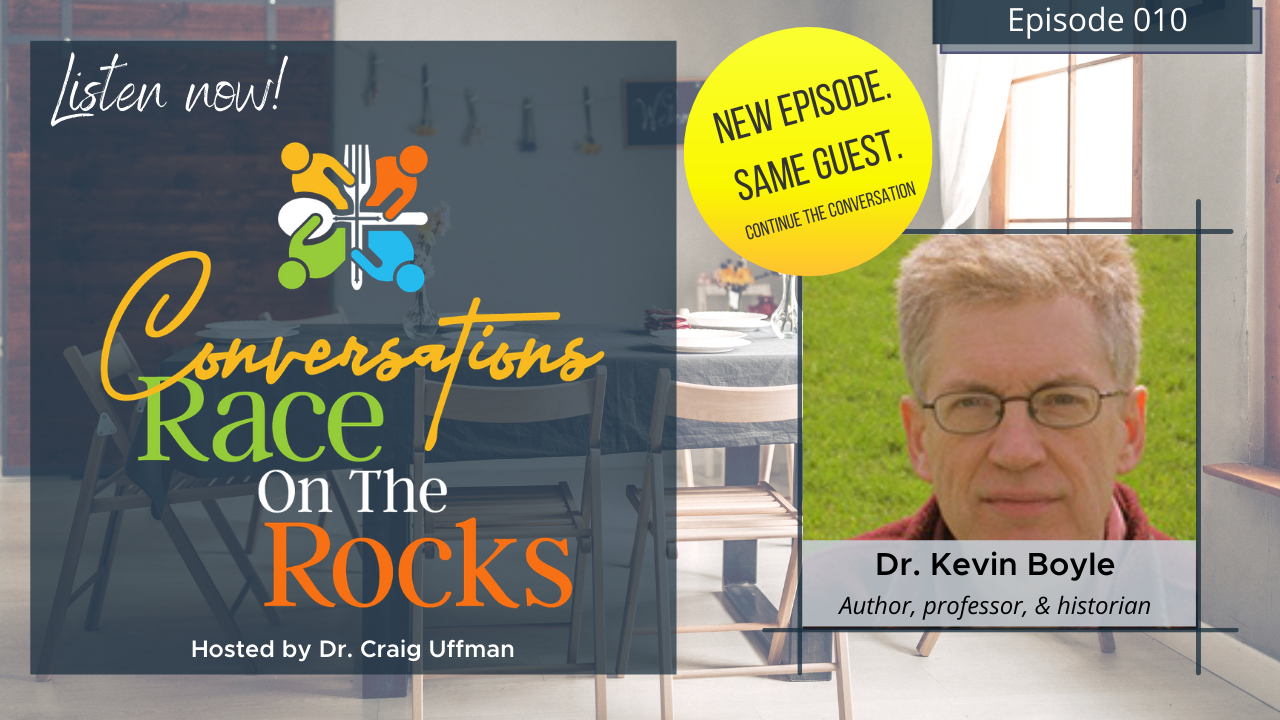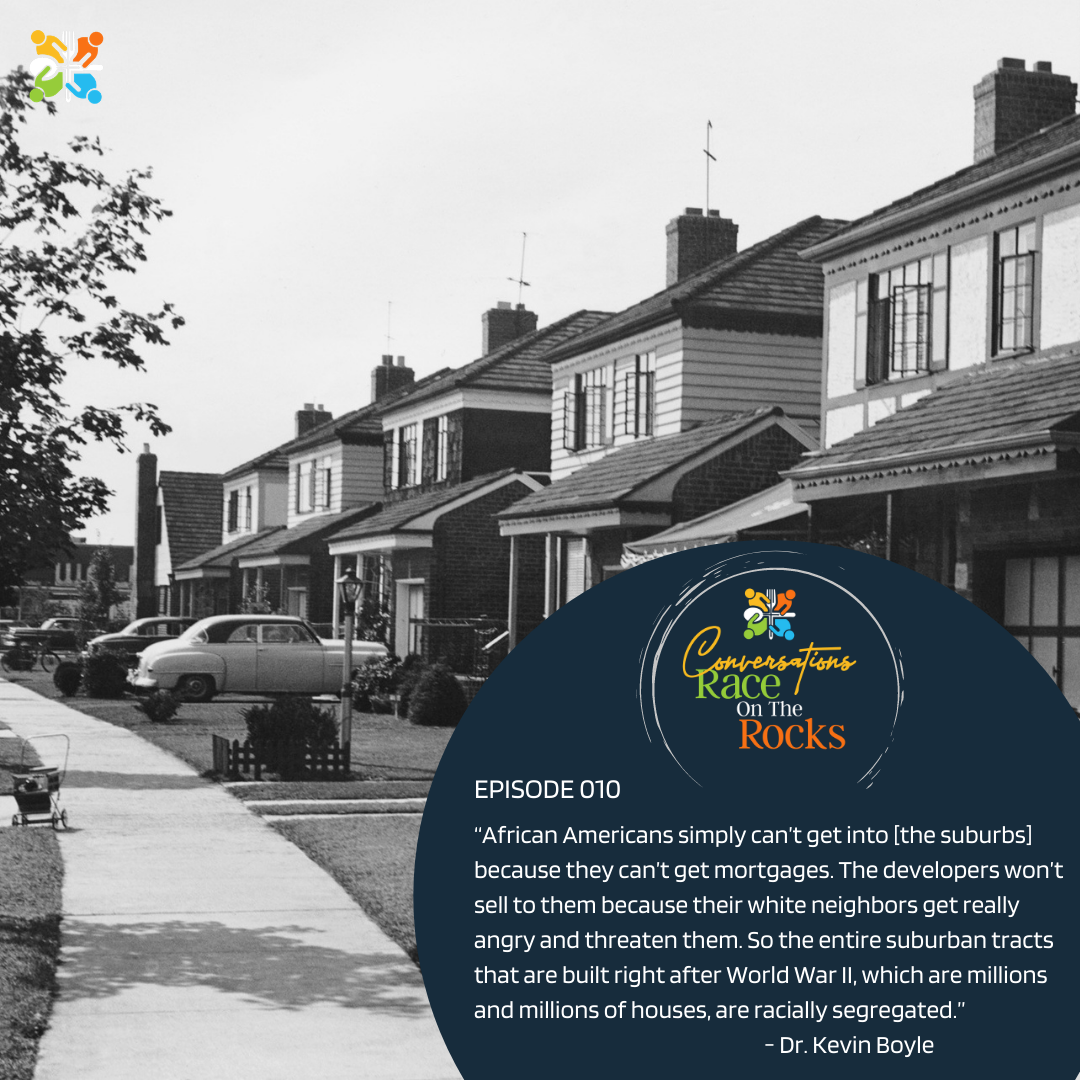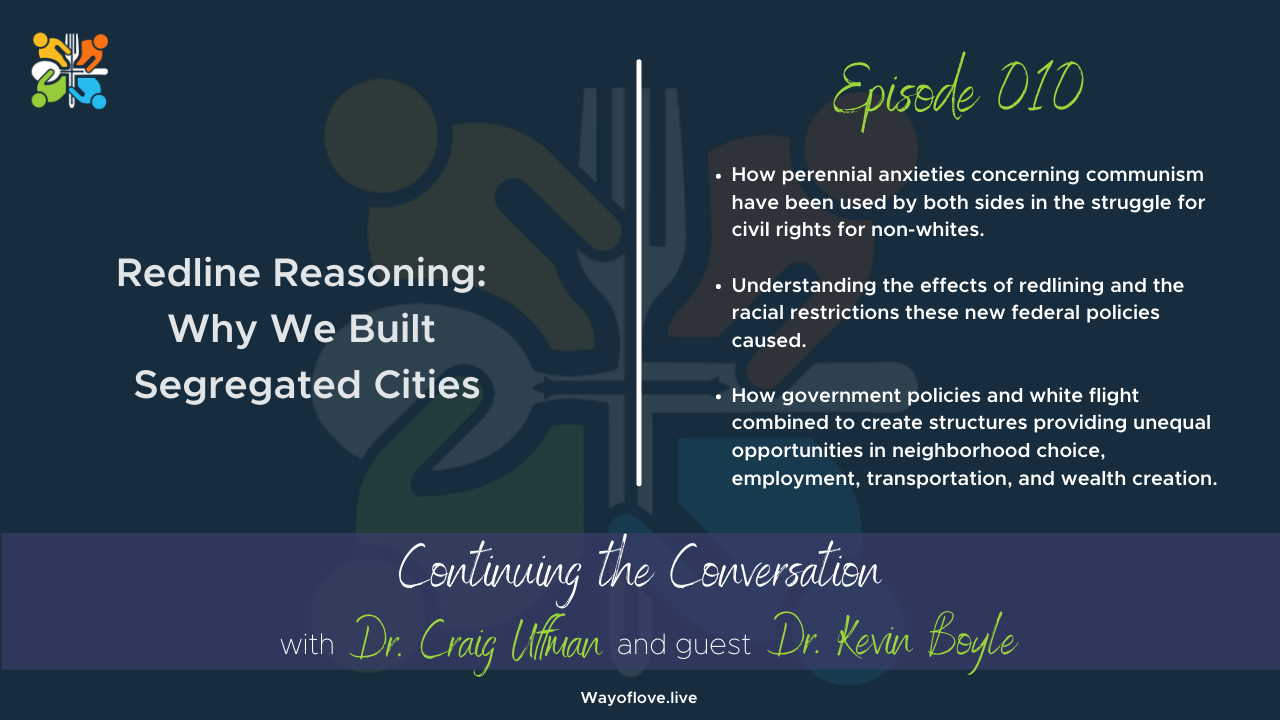“In this great drive to segregate as much as possible in the early 20th century - the drive that created Jim Crow - one part of that was an attempt by any number of white communities to require by law that neighborhoods be racially segregated.” - Dr. Kevin Boyle
Listen now on Spotify, Apple Podcasts, Google Podcasts, Stitcher and more!

Today, I welcome back Dr. Kevin Boyle, who reminded us in the previous episode the important parts of our nation’s struggle with racial justice, focusing on the first few decades of the 20th century. We will pick up where we left off and take a look at the start of the Civil Rights Movement.
Dr. Boyle is a professor at Northwestern University, specializing in the history of the 20th century United States. He has a particular focus on modern American social movements, such as the Civil Rights Movement. Dr. Boyle has a long list of publications and honors including fellowships from the National Endowment for the Humanities and the Andrew Carnegie Corporation. He is the highly acclaimed author of Arc of Justice: A Saga of Race, Civil Rights, and Murder in the Jazz Age, which was a finalist for the Pulitzer Prize and received the National Book Award for Nonfiction and many others.
Listen on to learn more about the federal government’s role in segregation from the beginning of the 20th century to the 1950s. We need to understand our past so we can understand our present. And so we can act responsibly with the racial inequity of our present time.
Questions for Clergy and Other Group Leaders
- When did the second Civil Rights movement begin and end?
- What are “civil rights” and for which of them were we struggling to provide all citizens during most of the twentieth century?
- How did the Cold War impact the way our 20th-century struggle for civil rights played out?
- The federal government, led by Secretary of Commerce Herbert Hoover, actively promoted the idea of a single-family dwelling as a way of creating segregated spaces outside of crowded urban areas. Hoover’s American Dream was for white people only; whites were urged to buy their own homes outside of cities, while blacks faced a gauntlet of obstacles to ensure they dared not imagine the American dream was theirs to dream. Describe our story of housing inequities from the Supreme Court’s decision in Buchanan vs Warley in 1917 to what persons of color returning from service in WWII would have encountered at the beginning of Truman’s administration? What was it like for persons of color, what de facto public policies did we sustain that distinguished what was possible for whites and persons of color in both the South and the North?
- What is ‘white flight’? How did that shape our cities and neighborhoods?

Show Notes
- [3:51] - There is some debate among historians about when the Civil Rights Movement started and ended and if it ended at all.
- [4:36] - Dr. Boyle states that most of us think of the Civil Rights Movement as starting in the 1950s and 1960s, but it had really begun earlier in the 20th century.
- [6:50] - Woodrow Wilson tried to remake America’s place in the world by committing America to WWI. He stated that America’s job was to promote and protect democracy in the world.
- [7:39] - Dr. Boyle also discusses America’s aspirations in the years following Woodrow Wilson’s presidency, specifically during WWII, and Franklin D. Roosevelt following in his footsteps.
- [8:17] - There is a direct correlation between the Cold War and Woodrow Wilson’s goals laid out in 1917. This matters for the Civil Rights Movement because for Blacks, America’s aspiration for true democracy was not true to them.
- [9:40] - As the United States Department of State is telling people of color emerging from colonization to side with America rather than the USSR, Blacks at home were saying that we can’t make claims about the benefits of democracy if they aren’t embracing those principles at home.
- [12:01] - Dr. Boyle explains that in 1917 not only did the United States enter into WWI, but the Russian Revolution was taking place which resulted in the world’s first Communist state within Russia.
- [13:00] - Leninists believed in the international revolution of the working class. They were committed to the idea of spreading the Communist revolution around the globe. This terrified Americans.
- [13:51] - The Russian Revolution deeply disturbed Americans even though there was no direct threat to it reaching the United States.
- [14:18] - Dr. Boyle discusses the surge of anti-Communism that comes up every several years throughout history.
- [15:14] - Dr. Uffman describes the Truman Doctrine and why it is an important part of our racial history.
- [17:09] - Convict leasing is something that has come out of these eras that continued on even until the 1990s and 2000s. The United States was continuing to exploit Black labor.
- [18:14] - We have this idea that after the United States was no longer a slave society that anyone could sell their work for money. But what historians have pointed out is that there were many other ways that people were forced to work in coerced working systems.
- [19:57] - Dr. Boyle explains that while sharecropping was not slavery, it was a form of coerced labor and uses it to demonstrate that although slavery had ended, there were many ways to continue exploiting labor, particularly the labor of Blacks.
- [21:09] - Dr. Uffman brings up the fact that Herbert Hoover promoted the American dream of a single-family home. But what wasn’t taught in history books was that this was designed to segregate neighborhoods based on race.
- [22:37] - In 1917, the Supreme Court ruled that it was unconstitutional for neighborhoods to be segregated by law. The law couldn’t tell people where they could live.
- [23:17] - Once the Supreme Court ruled that, then Jim Crow couldn’t legally segregate neighborhoods anymore. Instead, the forces of the marketplace did. Whites used private agreements to segregate, and the courts did not stop that practice for decades.
- [24:28] - During the Great Depression, the bottom fell out of the real estate market. When the Roosevelt administration came in they decided to underwrite the entire real estate industry by insuring mortgages.
- [25:14] - As this happened, the federal government took all the private restrictions of the real estate marketplace and wrote them into federal regulations. Dr. Boyle describes redlining and how the government used it to divide cities and prohibit mortgages to redlined neighborhoods.
- [26:57] - Dr. Boyle shares that he taught a course to freshmen on redlining and explains how poor white neighborhoods would get redlined if just one black person was living there.
- [27:45] - Because of these federal regulations, those in redlined neighborhoods were blocked from access to the federal government’s protection in keeping their homes. It became very hard to get a mortgage.
- [29:40] - The theory behind redlining was that they were assessing the market risk in different areas.
- [30:10] - During the Great Depression and WWII, there was virtually no new construction of homes. But when soldiers came home from their WWII deployment, they received government mortgages but there were no houses to buy.
- [31:07] - The Levitt construction company had the idea to mass-produce houses. They bought land and put up quick, inexpensive homes to buy with VA and FHA mortgages.
- [31:39] - But, because of the assumption that market values would be unstable if their subdivisions were integrated racially, the Levitt company did not want Blacks purchasing their houses and living in those neighborhoods, so they wrote restrictions into the deeds of the homes, and the FHA and VA wrote similar covenants in their financing deals.
- [32:22] - The vast majority of American suburbs that are built right after World War II to meet the massive housing demand are racially restricted. African Americans simply can’t get into them because they can’t get mortgages. The developers won’t sell to them because their white neighbors get really angry and threaten them.
- [33:14] - Dr. Boyle describes the effect of racially segregated neighborhoods on economics and employment.
- [34:14] - When talking about the landscape of racial inequality, these points made by Dr. Uffman and Dr. Boyle all illustrate the role that the federal government played.
- [35:34] - Restrictive covenants on the deeds to houses were ruled unenforceable in 1948 but not illegal.
- [36:20] - The federal government’s housing laws - the redlining practices - don’t say anything about race. They use the word risk. The effect is racial because then these restrictive covenants are legal ways that Whites restricting where Blacks could live.
- [37:03] - Legally, private groups have every right to discriminate. It was only when the government is involved that discrimination became illegal. Redlining created segregated cities throughout the United States.
- [38:43] - Dr. Boyle explains contract selling and how it worked. It eliminated the middle man of the bank. Instead of getting a loan, buyers pay the seller every month for the mortgage.
- [40:07] - The tricky part about a contract sale is that the seller keeps the deed to the house until the final payment from the buyer. If a month is missed, the buyer could be kicked out of the house and lose all the money they’ve already paid.
- [41:10] - Contract selling became one of the ways Blacks would buy a house since they could not get a loan from the bank. With predictable frequency, they would lose the home and their money in the process, and Whites speculating on their default would reap huge profits.
- [42:01] - Sellers would count on the fact that they would miss a payment and then repeat the process multiple times on the same house with different buyers. This is another form of exploitation seen in this time.
- [43:11] - Once the connection was made between property values and race, and now that houses were more readily available to buy, Whites began leaving neighborhoods in mass numbers if Blacks moved in.
- [44:22] - This phenomenon is called White Flight. Nine of the ten largest cities in the 1950s lost population.
- [45:22] - An entire neighborhood would go from being entirely White to entirely Black in a year because when one Black family moved in, Whites would leave en masse. This caused jobs to move to the suburbs as well.
- [47:31] - When jobs moved to the suburbs, it also caused a problem with transportation for Blacks and poor Whites in the city center. Dr. Boyle shares a story from his hometown of Detroit.
- [50:01] - When Whites moved to suburbs, the federal government subsidized factories and other employment opportunities for those areas. This wasn’t illegal segregation, but Dr. Boyle demonstrates how the effect was racial inequity.
- [51:38] - In the next episode with Dr. Boyle, we will have the opportunity to talk about segregation in the American education system.
Links and Resources
Connect with Dr. Craig Uffman:
More from Dr. Kevin Boyle:

